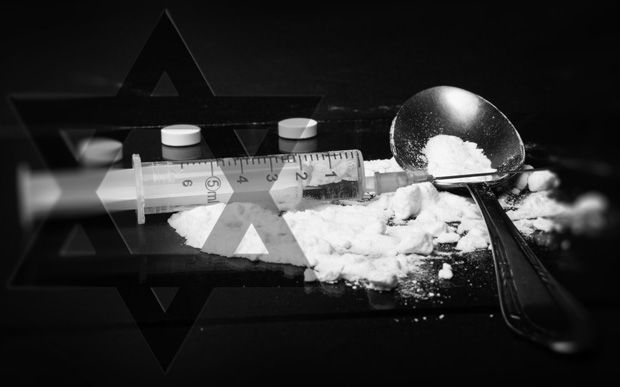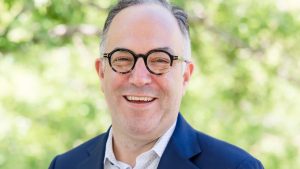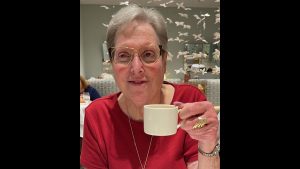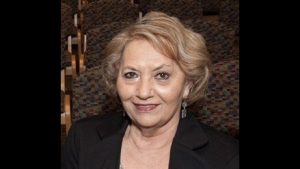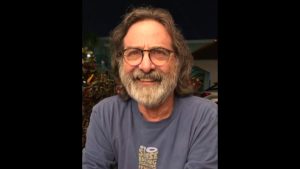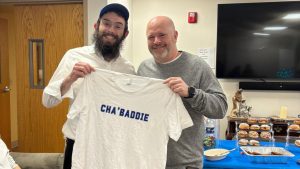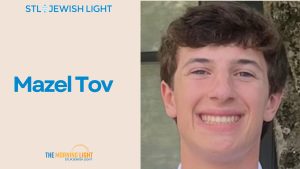St. Louis Jewish families touched by heroin epidemic fight back
Published May 25, 2016
In September 2011, Adrienne Eigles was preparing to attend Rosh Hashanah services at Congregation Shaare Emeth.
Her son Andrew was sleeping downstairs. He had been addicted to heroin and was taking monthly doses of Vivitrol to help keep him from relapsing.
It appeared to be working. He had been clean for nine months, said Eigles, who is among a growing number of Jewish families affected by heroin addiction.
Eigles, of Chesterfield, and others now share their stories to advocate for legislation on issues such as prescription drug monitoring and to try to remove some of the stigma that surrounds drug addiction. Their message is often simple: The disease of addiction does not discriminate. That means it is as prevalent in the Jewish community as it is among any other religious, racial or ethnic group.
“Heroin is known as an equal-opportunity destroyer,” said Howard Weissman, executive director of the National Council of Alcoholism and Drug Abuse-St. Louis (NCADA). “It has taken lives in all corners of St. Louis and St. Louis County, and that certainly includes folks in the Jewish community.”
Politicians and public health officials describe heroin addiction as an epidemic in the United States. The heroin overdose death rate in this country more than tripled, from 2010 to 2014, to an average of 3.4 per 100,000 people, according to a study released by the St. Louis County Department of Public Health.
The problem is particularly acute in St. Louis County, where the heroin overdose death rate in 2013 was 10 per 100,000 people, almost four times the national average, according to the study.
Rabbi James Stone Goodman started to see an increase in the number of opiate addicts who attend his support groups about five years ago. He has been organizing groups that mix the 12-step program with Jewish spirituality since 1981.
“There has to be quicker, direct access and more possibilities for treatment,” said Goodman, who leads Neve Shalom congregation in Creve Coeur and Shalvah, a support group.
Other advocates point to a variety of reasons behind the epidemic. Missouri is the only state that does not have a prescription drug monitoring program. As such, law enforcement officials and health care providers are not able to tell whether someone has been traveling among different doctors or pharmacies to get prescription opioids, which is where heroin addiction often starts.
The Missouri Network for Opiate Reform and Recovery is pushing for legislation to provide third-party access to Narcan, an overdose antidote that in Missouri is limited to medical providers and first responders; a 911 good Samaritan law that provides limited immunity from possession and paraphernalia charges for those who make an emergency call in the event of an overdose; and expanded Medicaid coverage for people seeking treatment, said Chad Sabora, a recovering addict and founder of the organization.
Push for Missouri drug monitoring program
Sabora was raised Jewish and worked as a prosecuting attorney in Cook County, Ill., from 2005 to 2008, when he was arrested for possession of a controlled substance. His parents had died from cancer a few years earlier, and he spent six years abusing prescription opiates and heroin until getting clean in 2011.
He does not think that St. Louis County has a higher overdose rate than the national average because more people are using; rather, the state has a lack of “evidence-based, proven remedies.”
The Missouri Legislature earlier this month approved a bill that would allow physicians to prescribe naloxone (the generic of Narcan) to individuals rather than just first responders. Gov. Jay Nixon said he is weighing whether to sign the bill into law.
Efforts to pass a statewide prescription drug monitoring law have stalled because of some legislators’ concerns about patient privacy. St. Louis County passed legislation to implement a monitoring program in March.
Eigles has become an advocate for the monitoring program and shared her son’s story with the state Senate in 2014.
Andrew became addicted to opiates after tearing a ligament in a knee playing football during his senior year at Parkway Central High School. His doctor prescribed Oxycontin for the pain. He also had been suffering from depression, and then his father was arrested and sent to prison.
Before his downward spiral, “people just flocked to” Andrew, who grew up at Congregation Shaare Emeth, Eigles said.
“He loved football,” she said. “Not playing it as much as watching it. He loved the Seattle Seahawks —don’t ask me why.”
On that Rosh Hashanah morning in 2011, Eigles went downstairs to wake Andrew, 22, and found him dead. He must have used heroin during the night, she said.
If there had been a monitoring program, Eigles said, it might have been more difficult for her son to obtain the prescription opiates that eventually led him to heroin, a cheaper alternative.
After his death, she started the Andrew Eigles Memorial Fund, which raises money for the NCADA to fight heroin and prescription drug addiction. It held its third annual trivia night in February at Shaare Emeth.
Eigles also attends a bereavement group at the synagogue, but she still thinks there is some denial in the Jewish community about the scope of the epidemic.
The NCADA’s Weissman said that two Jews under the age of 23, who had no connection, overdosed on heroin and died in one week in 2014.
Eigles said: “It’s a hush-hush kind of thing that nobody wants to acknowledge.”
The stigma of drug addiction
Jean Sokora, 54, a recovering addict, agrees. She deals in prevention and early intervention for Preferred Family Healthcare, a behavioral health nonprofit.
As a teen attending Ladue Horton Watkins High School, Sokora developed a $2,000 a week cocaine habit. She entered treatment at a Catholic hospital in Minnesota. A psychiatrist there told her mother: “A nice Jewish girl like (this), she couldn’t possibly have a problem.”
Sokora, who has been clean since 1979, thinks that is a still-prevailing attitude.
“I just feel like we’re in the closet in some way. There is so much stigma attached to addiction,” said Sokora, who also attends Shaare Emeth. “Jews are so freaking outspoken about everything, but we are not standing up and having forum after forum about something I see as the No. 1 public health issue.”
In the Orthodox community, there is sometimes “the shanda factor,” said Joseph Rosenfeld, who is Orthodox and works as a counselor at Harris House, a nonprofit substance abuse treatment center in downtown St. Louis.
“There used to be a song in Yiddish that was sung, ‘A shikker is a goy,’ that drunkenness or alcoholism was not part of our culture, was not part of our makeup,” said Rosenfeld, who moved to St. Louis from New York. “But when kids start dying over and over because of overdoses, (communities) have thankfully been opening themselves to the possibility that there needs to be a new way of treating it.”
Still Rosenfeld added, “For all the positive changes that are going on, there is still a drastic dereliction of focus on drug addiction in the Jewish community.”
Life as an addict
Gordon, who was raised Jewish and grew up attending Ladue schools, says there was no reason for him to start using painkillers.
“Like a lot of kids that got swept up in the suburban heroin epidemic, I grew up with two solid parents who did nothing but love me and support me,” said Gordon, 27, who asked that his last name not be used. “There was no significant event or traumatizing experience to make me feel like I needed to self-medicate.”
He had been a competitive athlete in baseball and soccer and was a classically trained pianist. He had worked at summer camp at Temple Israel and attended Camp Sabra, the Jewish Community Center camp at Lake of the Ozarks.
But in middle school, he started smoking marijuana, and by the time he got to high school, he was using it habitually.
“I just got swept up in the culture, that was going to be my badge of honor, that I was going to have the most fun, have the best weed,” he recalls.
Justin Greenberg, like many teenagers, also drank and smoked weed in high school. Otherwise, he had many close friends at Parkway Central and worked hard. He was the guy at the Waterway Gas & Wash station asking people who were filling up whether they also wanted a car wash. And he was good at it, his mother said.
“He called me up one time and said, ‘I just sold a $100 car wash to a guy,’ and it was pouring down rain,’ ” Pam Greenberg recalled of her son, who was raised Jewish and attended the Shaare Emeth Sunday school.
His opioid addiction didn’t start until he began attending the University of Missouri-Columbia, his mother believes.
“All of a sudden, there was no ambition,” she said. “He isolated himself from all of his good friends. He didn’t want them to know.”
About the same time, Gordon also was at Mizzou and becoming increasingly addicted to opiates. In high school, he was smoking at a friend’s, tried Oxycontin and “pretty instantaneously fell in love. I pursued it with a zeal.”
By the time he started college, he was crushing it and snorting it daily. When he nearly ran out of money, he made the switch to heroin. And then he learned that if he used it intravenously, “it lasts longer and it feels better.”
“I didn’t just wake up one day and decide to do heroin,” Gordon said. “I discovered the fact that heroin is the same stuff and a fraction of the cost.”
The worst part of being addicted, he said, is not so much the physical withdrawal but the psychological effects.
“The drug becomes like a survival mechanism,” Gordon said. “When you don’t have it and you’re not getting high, this intense panic comes in. It’s like you’re drowning.”
He dropped out of college in 2008 and tried outpatient detox programs and Suboxone, a drug designed to reduce opioid cravings. But he continued to use and didn’t stop until his parents told him that he had to go to a drug treatment program in New Haven, Conn., or “get the hell out.”
“I couldn’t be more grateful that my parents essentially decided enough was enough and presented me with a clear ultimatum,” he said. “I didn’t raise my hand and say, ‘Yes, I am sick of this.’ I went kicking and screaming.”
Becoming clean and sober
Once the Greenbergs learned about Justin’s addiction in 2014, they first sent him to a local drug rehab facility for two weeks, but when he came out and continued to use, the family gave him a similar ultimatum and sent him to a longerterm program in Tucson, Ariz.
From there, he moved to a sober-living house in Austin, Texas, where he spent a few months as part of a gradual step-down program in which he was regularly drug tested and had to maintain a job. In December 2014, he told his parents that he was ready to “start putting my life back together.” He moved into an apartment with others who were in recovery and maintained a job.
Gordon, meanwhile, spent a year in a program in which he gradually gained more independence and was drug tested regularly. He has been clean for almost six years and has become “an exercise and nutrition enthusiast” and hopes to start playing music again. He is part of a “vibrant recovery community,” attending 12-step meetings, playing in softball leagues with others who are sober, and working as an admissions coordinator at Turnbridge, the drug treatment program he completed.
“My belief system is definitely rooted in this idea that just because I’m clean and sober does not mean I have to hide from the world,” he said. “In fact, I can participate on a much deeper level than I was able to in the past.”
Now a certified addiction counselor, Gordon is willing to share his story because he thinks that openness is what will help solve the epidemic.
“I think the best thing we can do is continue to keep this issue on people’s minds,” he said.
Pam Greenberg is certain that Justin wanted to get clean. But more than a month after moving into his own apartment, he relapsed. And in the next week, in February 2015, his mother got a call from a Texas number. She thought it was Justin, but it was the police. Justin had overdosed and died at age 27.
“I want people to know that this was a normal, happy kid who made a terrible decision probably one time, and heroin got him then,” said Greenberg, a health care consultant who also has a surviving son and daughter. Since Justin’s death, she has become involved with the Missouri Network for Opiate Reform and Recovery and plans to volunteer with the group as much as possible.
She and her husband, Martin, have also started talking with parents and children about the dangers of prescription drugs and heroin.
“I want parents to know what to look for, and I want kids to know how dangerous (heroin) is,” Greenberg said. “They need to run the other way.”



